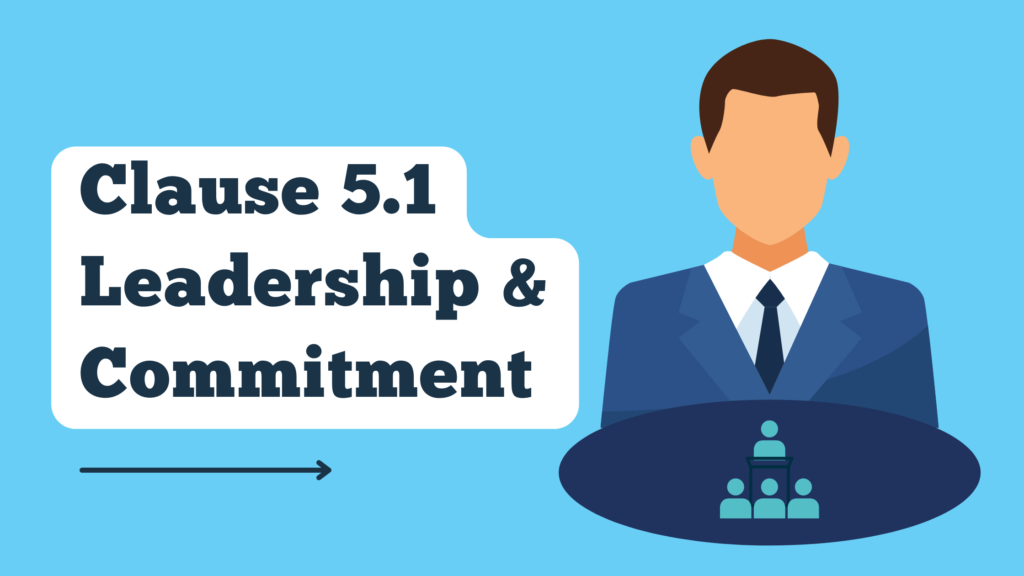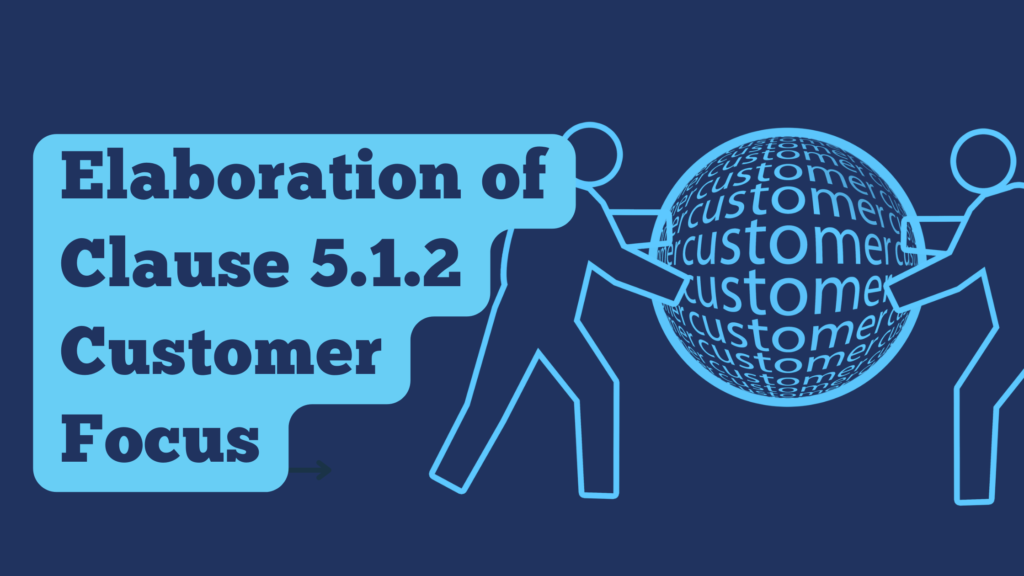Clause 5.1 Leadership and Commitment – Explaination of an important clause

5.0 Leadership
Leadership (5.1 Leadership and Commitment) is the driving engine of any organization, leadership support and commitment is mandatory for any management system to execute and sustain.
It is a proven fact and discussed by many leadership and management experts, professionals, and researchers that whatever the leadership will do it has been followed by even the grass-root level employees due to the term called “trickle-down effect”.
So this means if the leadership is following “quality principles” the team members will do the same, and if they are not focusing on quality the team members will do the same.
Clause 5.0 is Leadership. This clause has three parts, we will discuss them one by one:
- Leadership And Commitment – Clause 5.1
- Policy – Clause 5.2
- Organizational Roles, Responsibilities, And Authorities – Clause 5.3
5.1 Leadership and Commitment
Here in this article, I am going to do the clause by clause elaboration. Like our format of these articles, the standard clauses are written in bold-italic while the elaboration is in simple text. So according to standard following are the duties top management must carry out to show as evidence of their commitment to the QMS.
Top management shall demonstrate leadership and commitment with respect to the quality management system by:
| Clause | Elaboration |
| a) taking accountability for the effectiveness of the quality management system; | The top management has the final accountability vested in them. They can assign roles and responsibilities to others. Moreover, we will read about this in clause 5.3 Organizational roles, responsibilities, and authorities |
| b) ensuring that the quality policy and quality objectives are established for the quality management system and are compatible with the context and strategic direction of the organization; | Top management must ensure that these documents are prepared, and is the signing authority of these two documents: Quality policy quality objectives. In my opinion, these two documents must always be signed by the person who is on the top of the hierarchy i.e. CEO, MD, and Founder. |
| c) ensuring the integration of the quality management system requirements into the organization’s business processes; | This is one of the responsibilities of top management to basically merge the ISO 9001:2015 requirement in the existing running system so that people must not see it as extra work or burden but take it as part of the job! |
| d) promoting the use of the process approach and risk-based thinking; | Top management should be the biggest advocate of a process approach and risk-based thinking |
| e) ensuring that the resources needed for the quality management system are available; | To implement the QMS resources are required, for example, these resources can be; financial, human, infrastructure, training material and knowledge, approvals, raw material, ensuring the availability of these is one of the responsibilities of top management |
| f) communicating the importance of effective quality management and of conforming to the quality management system requirements; | Top management must take lead in communicating to everyone about the importance of implementing an effective QMS. For example, this communication can be done through; meetings, seminars, weekly or monthly newsletters including messages from CEOs focusing on QMS, posters, quotes displayed from management about QMS, campaigns, celebrating quality weeks and days, speaking in town hall meetings about the company’s QMS |
| g) ensuring that the quality management system achieves its intended results; | Top management must ensure that QMS is getting the results that it is intended to make. If not then take a lead to take some necessary corrective actions so that the system becomes fruitful. For example, calling a meeting, ordering a root cause analysis, and leading a brainstorming session. |
| h) engaging, directing and supporting persons to contribute to the effectiveness of the quality management system; | This refers to the involvement of top management in the issues with are directly related to the QMS effectiveness. For example, nonconformities, defects, and glitches in the system affect the effectiveness in a negative way. |
| i) promoting improvement; | This is about the mindset, the improvement mindset, top management must take actions for the promotion of improvement, which means any step from which improvement is expected is encouraged and those steps which hit the quality of the system are discouraged |
| j) supporting other relevant management roles to demonstrate their leadership as it applies to their areas of responsibility. | Finally, top management can support the down the ladder managers through various meetings, delegation of responsibilities, coaching and mentoring them, knowledge sharing, advising from their previous experience. |
What can be asked in an audit regarding 5.1 Leadership and Commitment?
As you can see in the above clauses the words like “taking accountability, ensuring, engaging, promoting, supporting” shows that the standard requires top management’s complete involvement and engagement in the implementation and execution of the QMS. This is the continuous demonstration of leadership and not mere the commitment of words or just documentation! Prepare yourself for questions from external auditors like:
- Firstly, Is the quality policy established? Is it approved? Does it have the signature of the top management?
- Moreover, does the quality policy align with the context of the organization?
- Thirdly, are sufficient (financial, human, and technological) resources are provided to the team for the successful execution of QMS?
- What actions have been taken for the “promotion of improvement”?
- How are you keeping updated if the intended results are achieved or not?
- What action do you take if the results deviate?
- How are you promoting continual improvement?
- Is the commitment to QMS trickled down the ladder?
- Finally, all other managers demonstrating leadership in the same direction or not?
Evidence of 5.1 Leadership and Commitment
The evidence of the involvement and engagement can be verified from:
- Participation of the top management in the management review
- Involvement in the drafting meeting of the quality policy before the final signing
- In the setting of goals and objectives, top management must be able to explain why those goals are set. Furthermore, how an objective is supporting the strategic direction of the company
Conclusion:
In conclusion, what you have to understand is that when you are implementing this system top management should be fully involved.
Moreover, if you are assessing the system as an external auditor you have to ensure through auditing the documentation and interview of the leadership to know that they are “actually” involved in the implementation practically, making decisions and giving direction and not only on the paper.
So here we have completed the first part of the clause, which is 5.1
- Leadership And Commitment – Clause 5.1 – Furthermore, here is a very detailed article on this subject worth reading written by Pretesh Biswas.
Coming up next:
- Policy – Clause 5.2
- Organizational Roles, Responsibilities And Authorities – Clause 5.3



